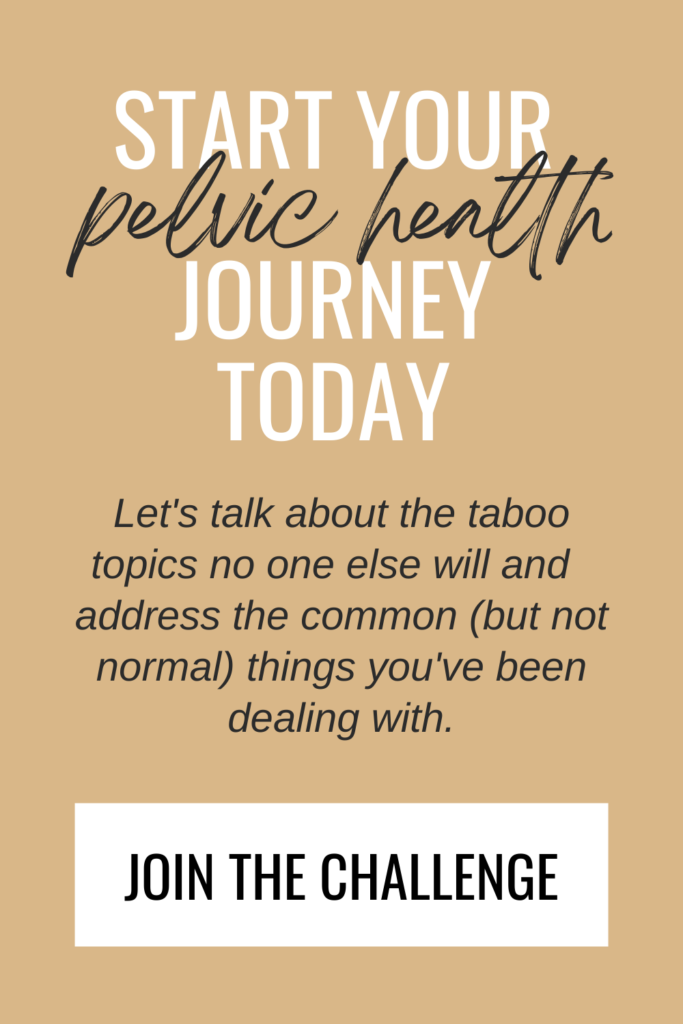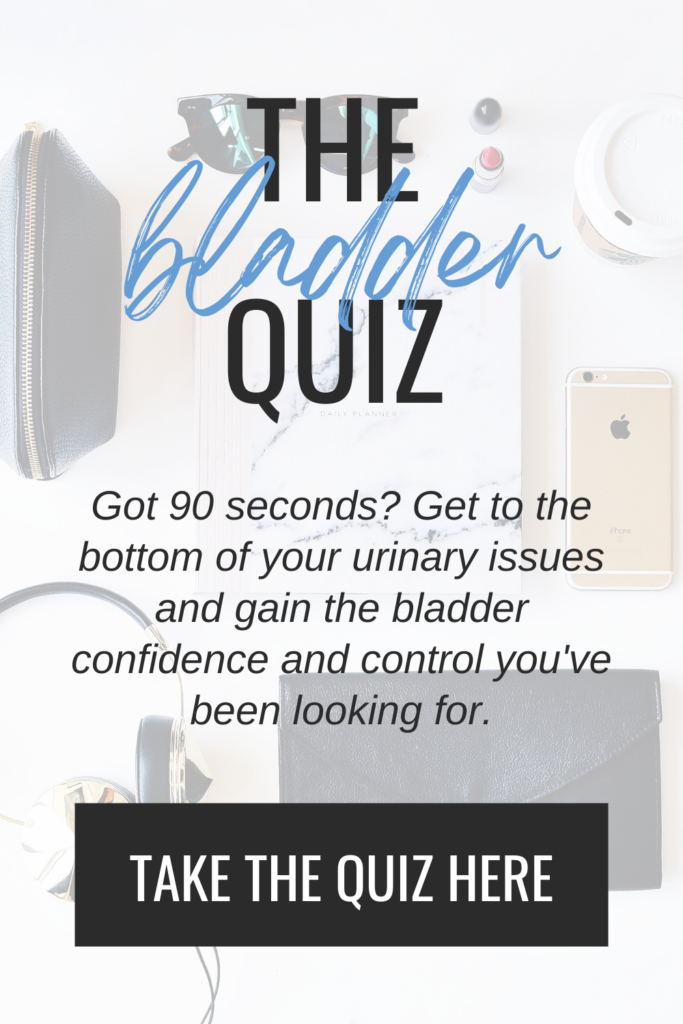You miiiiiiiiiiight (or might not) be surprised to know that pelvic pain is the most common complaint that brings women into my pelvic rehab clinic. More than bladder issues, constipation, and pelvic organ prolapse combined, pelvic pain tops the symptom charts and it excites me to my bones that women are finally saying “enough is enough” and seeking help for pain with sex, tailbone pain, pain with ovulation and menstruation, lower abdominal pain, and pain with urination.
After learning to manage my own endometriosis-related pelvic pain, working diligently towards pain-free periods, healing from a (not ideal) third degree tear postpartum, and spending years helping hundreds and hundreds of women do the same, I’ve developed strategies and methods that *ahem* actually work for all of the above.
RELATED POST: 7 Holistic Menstrual Cycle Hacks to Help You Thrive During Your Period
Helping and ultimately healing pelvic pain almost always involves releasing pelvic floor muscle tension (because FYI – a tight pelvic floor is not a good thing) and my free guide to relaxing the pelvic floor is the perfect place to start. But beyond breath techniques, reducing stress, and all the other tips you’ll find in that must-grab guide (*wink wink*), I’ve recently learned about the power of acupressure for pelvic pain and holy smokes…my pelvic health tool box just got ten times more effective.
RELATD POST: My Daily Pelvic Floor Relaxation Routine & Why You Might Want to Try It Too
RELATED POST: 3 [Shocking] Ways Your Pelvic Floor Responds to Stress
Acupressure is kiiiiiinda like acupuncture in that it’s based on meridians and energy (or Chi) from ancient Chinese medicine, but rather than stick needles into the points, you push on them with your finger instead. While my western-thinking brain still can’t completely comprehend how, what, and why acupressure works, there’s more and more modern research proving it does, so I figure…why not give it a try!?
Acupressure is easy, accessible, and free, and like the rest of the strategies I teach for treating pelvic pain (did you snag my guide for relaxing the pelvic floor yet?), acupressure fits seamlessly into the busiest of days. No need for hundreds of kegels or an hour-long workout regimen…my style (and the reason it works) includes little yet meaningful and mindful activities that can be completed on commutes or done during nap time for big, “why didn’t I do this sooner” kinda results.
RELATED POST: Easy & Impactful Ways to Use Your Time Confetti to Improve Your Pelvic Floor Health
RELATED POST: No Time? Car-Friendly Pelvic Floor Exercises You Can Complete on Your Morning Commute
If a healthy, happy, pain-free pelvic floor is currently on your agenda, and this small-but-mighty, less-is-more approach sounds good to you too, then get ready to watch the magic happen. I’ve added acupressure for pelvic pain into my patient’s plans and home programs, and people are already reporting a difference! So…it does work (!!!!) and I’m excited for you to see the difference too.
What is acupressure?
Acupressure is considered a form of acupuncture that’s based on the traditional Chinese medicine theory of the body’s meridians and is used to stimulate the flow of energy (or Chi). The only difference between the two is you use the fingers, thumbs, or elbows to stimulate the points in acupressure rather than needles with acupuncture. Pressing on the acupoints is considered a form of bodywork to release blocked Chi and transmit energy from the outer tissues to positively effect their related systems and organs.
Compared to acupuncture, acupressure is non-invasive, cost effective, and can be done by anyone who knows where and how to place pressure. Evidence as recent as 2019 shows acupuncture can help with low back pain, fibromyalgia, dysmenorrhea, fatigue, stress, anxiety, nausea, infertility, PMS, and menopause to name a few.
I’m obsessed with conservative medicine and using the body to treat the body, and acupressure fits in beautifully with both sentiments. Because bringing pelvic health out of the clinic and into your hands is ~literally~ my life mission (and I’m passionate about making it as easy as possible for you to achieve), I’m getting into the nitty gritty “how” and “where” of acupressure for pelvic pain, so if that’s the kind of info you’re lookin’ for, keep reading friend!
How to perform acupressure correctly–
Once you know the best acupoints for pelvic pain (keep scrollin’ for my personal favorites), there’s a specific technique you should follow to get the best results. The good news is that you can’t really hurt yourself or do it “wrong”, so practice and implement with zero apprehension! The more you do it, the more effective you’ll be and the better you’ll know which points your body responds to.
THE ACUPRESSURE TECHNIQUE
- Start with mindful breathing, focusing on a slow and steady inhale and exhale to center the mind, calm the nervous system, and relax the pelvic floor.
- Follow by lightly and repetitively tapping on the acupoint with your middle finger to stimulate the meridian and open the energy channels.
- Apply pressure at a 90-degree angle to the surface you’re pressing on. Begin by using the middle finger only, then add the index and ring finger as needed.
- Depth and pressure will vary based on the structure and body type. This should be firm and direct but not painful.
- Hold each point for two to four breaths, more or less depending on what feels good to you. Perform on both sides of the body. If you feel tightness, twitching or vibration in the tissue, it is likely an acupoint where energy needs to be released.
My favorite acupressure points for pelvic pain
Ok…before we go any further, I’d like to remind you I’m not an acupressure expert. I’m simply an experimenter who has found acupressure for pelvic pain helpful and genuinely love the idea of you getting the same pelvic health benefits with zero risk in the process. That being said, there are 361 acupoints along 14 meridians in the human body, and full disclosure – I don’t know them all. I often say certified pelvic rehab therapists “know a lot about a little bit”, and that definitely applies to these specific acupoints too.
You can do all of the following acupoints in the following sequence (thought to be most beneficial based on the direction of meridian flow) or test and find the tried and true few that work for you–

ACUPOINT 1: Large Intestine 4 (LI4)
You will find LI4 by locating the fleshy depression in the webbing where the thumb and first finger meet. This point is known to relieve pain anywhere in the body, but is specifically helpful for lower abdominal pain and menstrual cramps. I love this one because it’s super accessible and can be activated anytime. THIS POINT SHOULD BE AVOIDED WHILE PREGNANT AS IT CAN PROMOTE LABOR.
ACUPOINT 2: Conception Vessel 2 (CV2)
You can find CV2 at the top of the pubic bone in center of your body along the line of the belly button. Press downwards on the pelvic bone towards your feet, not backwards towards your glutes. This point is known for relieving menstrual cramps, lower abdominal pain and bloating, and genital pain.


ACUPOINT 3: Bladder 48 (B48)
You will find B48 two finger-widths from the center of the sacrum towards the glutes. Place your pinky finger along the center of your sacrum. With your hand laying flat on your low back, B48 is located towards the center of your glutes in line with your middle finger. If this is difficult to access with your hands, you can use a tennis ball. This point is known for relieving hip and low back pain as well as general pelvic floor tension.
ACUPOINT 4: Spleen 6 (Sp6)
You can find Sp6 four-finger widths above the bone on the inside of your ankle. Place your pinky finger just above the bone on the inside of your ankle. With your hand laying flat on your inner leg, Sp6 is located in line with the ankle bone just beyond the index finger of your hand. This point is known for relieving menstrual cramps and lower abdominal pain and promoting overall sexual and gynecological health. THIS POINT SHOULD BE AVOIDED WHILE PREGNANT AS IT CAN PROMOTE LABOR.


ACUPOINT 5: Liver 3 (Lv3)
You will find Lv3 on the top of your foot between the bones of your first and second toes. This point is known for relieving general muscle tension, menstrual cramps, and genital pain.
ACUPOINT 6: Conception Vessicle 1 (CV1)
You can find CV1 on the perineum, halfway between the bottom of the vaginal opening and the anus. This point is known to relieve genital pain and itching, menstrual cramps, and help with general genito-urinary issues. I usually recommend doing this one first thing in the morning or last thing at night, as this area is most easily accessible when laying down and in a private setting.

Pelvic pain in whatever form you’re experiencing it can be physically and psychologically debilitating, affect your relationships, and alter your quality of life. I know this alllllllll too well because I was once in those same shoes – curled up in a ball, popping pills for relief, and hugging hot packs like they were my long lost bestie. There’s a better way to manage and resolve these symptoms for good, and I’m here to help one acupoint and pelvic floor relaxation exercise at a time.
As I mentioned earlier, I don’t ~fully~ understand how these points and meridians work, but I’ve seen and personally experienced that they do, and now I’m tappin’ and pressin’ on these acupoints during my commute, between patients, in the shower, and before I go to bed…and recommending my patients do the same. If you have any of these symptoms, I encourage you to give acupressure for pelvic pain a try!
PS – I’m now offering one-on-one online pelvic health consults to bring allllll the pelvic floor healing out of the clinic and into your hands with just a mouse click (or two). If you’ve hit your “enough is enough” line in the sand like so many other women have, schedule your online consult with me today! Picture this same, in-depth (but totally realistic) guidance personalized to your individual medical history, current needs, and health goals. *Sigh* Living without pelvic pain is a beautiful, beautiful thing. and I can’t wait for you to see the benefits.
– Amanda
Disclaimer: The content provided here does not constitute medical advice, nor is it a substitute for personalized healthcare. I’m a doctor, but I’m not your doctor. If you have concerns about a medical condition, diagnosis, or treatment, you should consult with a licensed healthcare professional.



















